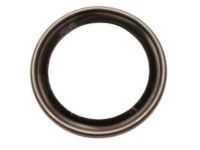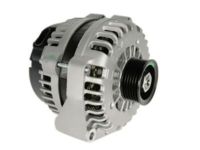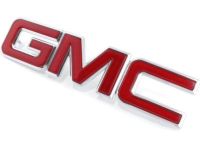Popular OEM GMC Safari Parts
- Body & Hardware Parts View More >
- Steering Parts View More >
- Electrical Parts View More >
- Air & Fuel Delivery Parts View More >
- Charging & Starting Parts View More >
- Engine Parts View More >
- Belts & Cooling Parts View More >
- Suspension Parts View More >
- Driveline & Axles Parts View More >
- Emission Control & Exhaust Parts View More >
- Transmission Parts View More >
- Brakes Parts View More >
Why Buy Genuine GMC Safari Parts From ChevyPartsGiant.com
Looking for real GMC Safari parts? ChevyPartsGiant.com may be a better choice to find genuine parts at wallet-friendly prices. We sell only OEM GMC Safari parts, ensuring perfect fit, reliability, and long-term performance. With our website, you can easily get access to the same parts found at local GMC stores. All components are produced by GMC and are exclusively fitted on GMC Safari automobiles. By shopping at our store, you can enjoy the quality of the GMC factory without the high prices of brick-and-mortar facilities. We achieve this because we are an online store operating at lower costs, which we pass on to you. We also have a user-friendly platform where you can find and order genuine GMC Safari parts swiftly. We are here to make your process of restoring a GMC Safari or dealing with simple repairs quick and inexpensive. We also make it easy to obtain GMC Safari parts at competitive shipping prices and a team of knowledgeable staff ready to take your order. Choose ChevyPartsGiant.com to save time and money, as well as keep your GMC Safari in the good condition.
The GMC Safari entered production in 1985 as GM's initial van model while Chrysler minivans appeared on the market. Its rear-wheel drive selection made the GMC Safari unique against its competitors. The GMC Safari received its production at the Baltimore Maryland factory until it reached a complete total of 3.2 million vehicles. The GMC Safari included two engine choices from 1985 until its discontinuation through 2003 that ranged from a 98 horsepower 2.5-liter four-cylinder to a 200 horsepower 4.3-liter V6 engine based on trim level year of production. Initially, the V6 engine used a four-barrel carburetor, which was replaced by throttle body injection in 1986 to improve fuel delivery and emissions performance. The T-5 Borg Warner manual transmission continued until 1989 when the GMC Safari started using 700R4/4L60 automatic transmission. A revised all-wheel-drive system entered the market during 1990 which combined the Borg Warner 4472 gearbox with Hydroboost braking for enhanced steering and better braking resistance as well as finding greater efficiency in fuel usage while improving driving performance. The Safari used a unibody-on-frame design and rear-wheel-drive layout, which helped provide greater durability and allowed for extended chassis versions with increased passenger capacity. The GMC Safari required genuine parts as it matured because OEM components added reliability along with maintaining performance standards and factory specifications which sustained the vehicle's dependability reputation.
GMC Safari concerns group into braking assist, fuel delivery, and power window operation. On the GMC Safari braking system, hydro boost leaks reduce assist and increase pedal effort. Fluid seeps from the brake booster behind the master cylinder and onto nearby hoses. Inspect for power steering fluid, replace the brake booster, flush the steering circuit, and bleed brakes. The Safari can show a soft pedal and an illuminated warning lamp. Fuel delivery on the GMC Safari can stall the engine or cause a long crank. Restriction at the fuel filter strains the pump and lowers rail pressure. Record pressure, command the pump, and renew the fuel filter every 30,000 miles. Power windows on the GMC Safari may slow or stop mid-travel as the motor overheats. Replace the window regulator motor, verify glass tracks, and ensure clean electrical grounds. After service, the Safari should stop firmly, restart quickly, and move windows smoothly. Verify no leaks at fittings, and retest after a short road drive. Check belt condition and tension to support pump and alternator. Confirm ABS operation and clear stored faults after hydraulic bleeding.
GMC Safari Parts Questions & Answers
- Q: What tools are required to replace the front inner axle wheel seal or bearing on GMC Safari?A:The process to replace the front drive axle's inner axle seal or bearing needs slide hammer (J 23907), bushing and universal remover (J 29369-1), axle bearing installer (J 42211), seal installer (J 42738) and driver handle (J 8092) as instruments. The first step is to lift the vehicle before you take out the left or right wheel drive shaft but protect the case from damage. First secure the bushing along with universal remover (J 29369-1) onto the back of the inner Axle Shaft bearing then insert the slide hammer (J 23907) to extract the bearing. To remove the inner Axle Shaft seal first place the seal cover in a vise and install the bushing and universal remover (J 29369-1) on the seal backside before using the slide hammer (J 23907). This process for the right side begins by removing the inner Axle Shaft together with its housing assembly followed by a removal of the inner Axle Shaft from the housing then using the bushing and universal remover (J 29369-1) and slide hammer (J 23907) to remove both bearing and seal. The process starts with bearing installation through the axle bearing installer (J 42211) combined with driver handle (J 8092) while using the square shoulder on the bearing. Next, install the new Axle Shaft seal with the seal installer (J 42738). Place the reinstalled inner Axle Shaft and housing components together before attaching the inner Axle Shaft seal cover and torquing bolts at 25 nm (18 ft. Lbs.). To finish the installation process you must gently strike the left inner Axle Shaft using a soft mallet before reinstalling the wheel drive shaft and verifying the axle lubricant level and lowering the vehicle.
- Q: How to replace the alternator on GMC Safari?A:Start the generator replacement process by disconnecting the negative Battery Cable while following thebattery disconnect caution. Start by separating the air cleaner assembly along with the Drive Belt followed by eliminating the regulator electrical link. Trim the generator by first removing the front mounting bolts and the rear mounting bolt along with the generator output (BAT) terminal nut. Hang the generator onto the vehicle first before installing its mounting bolts with limited torque. Fit the generator output (BAT) lead before installing the generator output (BAT) nut with loose physical tension. Use 50 n.m (37 lb ft) torque when tightening the generator mounting bolts together with 10 n.m (89 lb in) for the bat terminal nut. After plugging in the electrical connector of the regulator proceed with installing the Drive Belt before you reinstall the air cleaner then complete the installation by connecting the battery negative cable.
- Q: How to replace the Radiator Grille Emblem on GMC Safari?A:Before accessing the Radiator Grille Emblem you must first take out the grille to preserve its features. Remove the backside grille emblem nuts before taking out the physical emblem. Secure the grille emblem onto the grille components by following Fastener Notice in Cautions and Notices. After placing the grille emblem on the back surface, secure the nuts by turning them to 2.5 N.m (22 lb in). Reattach the grille to its original position.
- Q: How to service and repair the distributor on GMC Safari?A:Start by removing the engine cover to service and repair the distributor. Whitish buildup around the cap terminals, cap discoloration and yellowing of rotor cap and darkening with some carbon under rotor segment is normal. replacement is only done if there are driveability concerns. Check for caps leaks, small holes or carbon tracks between the terminal traces. Take off the cap and apply a DMM by putting one lead on a cap terminal while probing all the other terminals and the central carbon ball with the second lead, rotating the base lead to the next terminal and repeating the process until all secondary terminals have been tested. replace the cap if there are readings which are not infinite. Inspect for corrosion excess on the boundaries and nail brushing to clean, and the cap to replace if there is an excess corrosion but some is normal. Check the rotor segment for excess misuse and replace the rotor when there is excess looseness. Inspect for shaft-to-bushing looseness by examining the housing for cracks and damage, putting the shaft into the housing to replace the whole housing assembly if the shaft wobbles. Finally, reinstall the engine cover.




















































